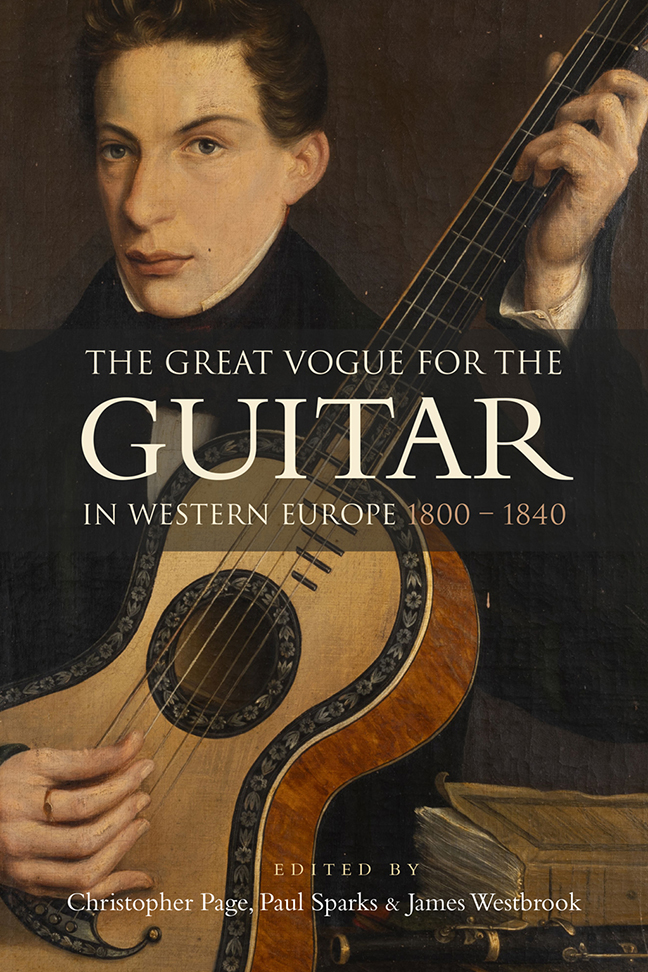Book contents
- Frontmatter
- Dedication
- Contents
- List of Illustrations
- Music examples
- The editors and the contributors
- Foreword
- Acknowledgements
- List of Abbreviations
- Introduction: The Great Vogue for the guitar
- I Contexts
- II The repertoire and its composers
- Appendix: A note on string-making
- Glossary of guitar terms
- Select Bibliography
- Index
3 - The instrument and its makers
Published online by Cambridge University Press: 10 January 2024
- Frontmatter
- Dedication
- Contents
- List of Illustrations
- Music examples
- The editors and the contributors
- Foreword
- Acknowledgements
- List of Abbreviations
- Introduction: The Great Vogue for the guitar
- I Contexts
- II The repertoire and its composers
- Appendix: A note on string-making
- Glossary of guitar terms
- Select Bibliography
- Index
Summary
Only in the last few decades have the guitars of the earlier nineteenth century been regarded, collected and played as instruments in their own right, with distinctive voices, rather than as imperfect forerunners of the modern classical guitar. This welcome development owes much to the early music movement, and the accompanying interest in historical performance, which gathered considerable momentum in the second half of the twentieth century and is still a powerful force. As late as the 1970s, the movement was mostly concerned with the music and musical instruments of the Middle Ages, the Renaissance and the Baroque period, but it eventually extended into the nineteenth century. The guitar, an instrument with little place in the standard Classical and Baroque repertoires that were of interest to most players and scholars of early music, was among the last to feel the effects.
Despite the growth of interest in the early-nineteenth-century guitar, notably among players of replicas and reconditioned originals, the craftsmen who made the instruments have received little attention. The task of reconstructing their careers and working methods requires painstaking research involving hundreds of surviving guitars, many of them in private hands; the instruments must be located and studied as artefacts, and almost all of them bear the marks of a long and sometimes bruising history, which complicates their interpretation. This is the indispensable and core material of the inquiry, though contemporary portraits of men and women (usually the latter) playing guitars offer a valuable supplement to the testimony of the extant instruments. Both types of evidence reveal many different varieties of design and construction, displaying the immense creative ingenuity of the makers. In many instances, a surviving instrument will have a label, branding or perhaps a cipher that ostensibly names the maker. There may also be a date and place of manufacture, purporting (for one must always remain vigilant) to establish the instrument's credentials and origins. From here, research branches out to birth certificates, census records, certificates of apprenticeship, letters, immigration records and the newspapers.
The evidence of the instruments
Our knowledge of guitar makers during the nineteenth century, therefore, rests above all on the study of surviving instruments, classified by region and, where possible, by maker, or (failing that) by school. Some of the most revealing aspects of a guitar, for this work, are surprisingly inconspicuous. Let us briefly consider three among many that might be cited.
- Type
- Chapter
- Information
- The Great Vogue for the Guitar in Western Europe1800-1840, pp. 41 - 56Publisher: Boydell & BrewerPrint publication year: 2023



